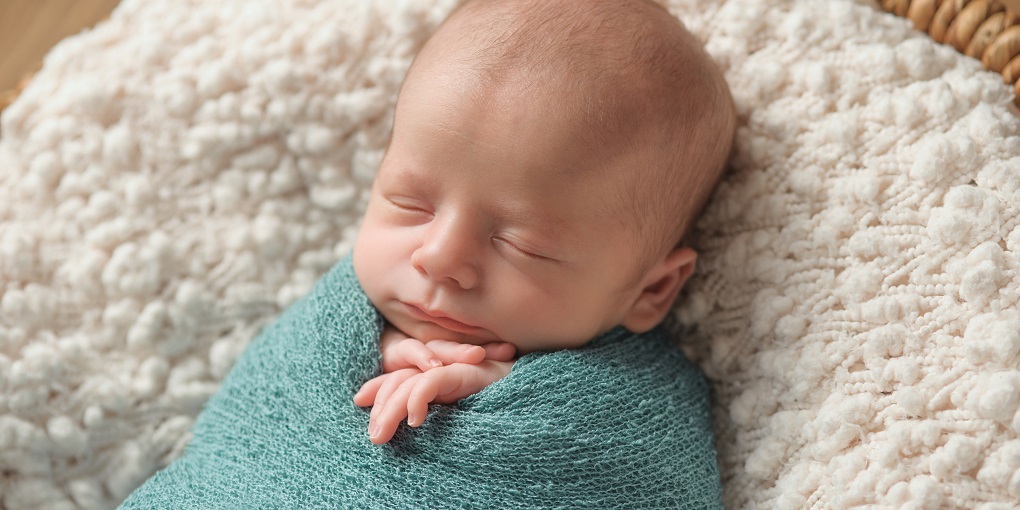Babies are wonderful, beautiful little miracles. They truly are, but when you have been awake for days on end listening to your sweet little newborn crying, it can lead to your own tears of helplessness and frustration! Babies cry, that is a fact of life, but there ARE ways to help alleviate some of their frustration (and yours as well) by creating an environment where they can self-soothe. This is where swaddling comes in – it is the foundation for encouraging restful sleep.
What Is Swaddling?
Swaddling simply means tightly wrapping up baby in a blanket in such a way that makes her feel secure, like being back in mama’s belly, all warm and cozy. But is it safe? The swaddle wrap is snugly fastened burrito style, so there’s no way it will come undone. As a result, swaddling, when done properly, is safe.
Why Swaddling Works
When babies are born, their neuromuscular skills are still largely undeveloped. They are rarely able to control their arm and leg movements, which often leads to them startling themselves awake by random movements. Swaddling alleviates this and can help them develop better motor skill organization. It’s especially beneficial for premature babies whose neuromuscular skills are even more underdeveloped.
As we mentioned earlier, swaddling is the foundation for encouraging restful sleep. What this means is that by starting with swaddling, you can then layer on additional soothing techniques if your baby requires them. By adding white noise, motion or even a pacifier to a swaddled baby will help to calm them and encourage better sleep habits.
The Benefits of Swaddling
According to the Journal of Pediatrics, one of the greatest benefits of swaddling is that it helps to reduce SIDS (Sudden Infant Death Syndrome). Swaddling makes it difficult for newborns to inadvertently cover their heads or face with bedding, due to the random arm movements we mentioned before. It also helps to prevent them from flipping over onto their stomachs. Both of these conditions have been linked to higher rates of SIDS in newborn babies.
One important caveat to this – if your baby is able to flip themselves over while being swaddled, then it is time to stop swaddling. Also, never place a swaddled baby on their stomach for sleeping. Swaddling is only to be used for babies on their backs. A baby who is swaddled while sleeping on their stomach is at a much higher risk of SIDS than sleeping on their stomach alone.
No Excuses!
We have heard a million reasons why new parents don’t want to swaddle their newborns …
“I don’t want her to get addicted to it.”
“He cries when I try to swaddle him.”
“I want her to practice getting her hands in her mouth so she can self-soothe.”
“I’ve heard that it’s not good for him.”
“My baby HATES being swaddled.”
Yes, we’ve heard them all, but it’s all bogus! Swaddling WILL make your noodle happier – and you, too! Being swaddled will help them sleep longer and sleep better. Helping them settle into longer continuous windows of sleep is, after all, the ultimate goal!
How To Safely Swaddle Your Baby
There are many ways to swaddle babies by using blankets or commercial products designed for swaddling. In order for swaddling to allow healthy hip development, the legs should be able to bend up and out at the hips. This position allows for natural development of the hip joints. The baby’s legs should not be tightly wrapped straight down and pressed together. Swaddling infants with the hips and knees in an extended position may increase the risk of hip dysplasia and dislocation.





